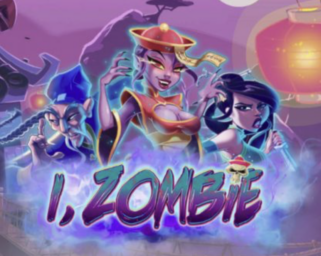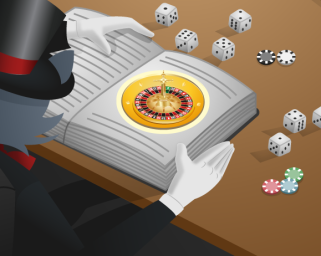There are many theories surrounding the origins of the Joker card. While it is not definitively known just how it made its way into the standard 52-deck– it still serves its place in some games. We will look at the history of the joker card in more detail today.
First Encounters

Many believe that the concept of the Joker came from Tarot and fortune reading cards. That’s due to its uncanny similarities in appearance and play function with “The Fool” in many tarot decks. But, tarots have been around since the 15th century. At the time, the Joker (or Jester) appeared in a positive light, as cards which bring new beginnings and signify the end of something old.
In 1863, a British man called Samuel Hart printed the first illustrated “Best Bower” card with his “Imperial Bower“ card. He produced this card right up until the 20th century.
It wasn’t until 1875 that the joker officially appeared in card decks and took on the functionality of a Wild card. According to various sources, the name officially evolved from the term which the German’s once referred to as the “Juker” or “Jukerspiel” during a trick-taking card game called Euchre (known as Bridge today.)
That same year, America also became familiar with the game. Card makers adjusted the rules to incorporate an additional high-ranking trump card. The new gameplay soon took off in the rest of the states. By 1880, both US and British card manufacturers included these extra trump cards in their decks.
In the few years that followed, this Best Bower card soon became known as the Joker, (the Jolly Joker in Italy). Makers gave it a unique design which easily distinguished it from the rest of the pack. Often it would be marked with some kind of pattern, logo or recognizable colors. Eventually the term “Joker” became a wide-spread, universal term for the card.
Joker Meaning

The Joker’s closest relation is “The Fool” card in Tarot. So it’s no wonder why it is believed to carry some kind of spiritual meaning. Much like The Fool, the Joker can represent a variety of different attributes. It could mean poorly considered actions and eccentricity. Or it could mean the representation of a new beginning, or the start of an adventure and something original. The cards depict him as a character who lives without limits, and is guided by the will of the universe. In cartomancy, 2 Jokers appear in the deck. One identifies as a black Joker, which corresponds with “The Fool”. While the red Joker acts as “The Magician” or “The Juggler.”
Cultural Traits of the Joker
- A significator card which represents the seeker or person looking to have their fortune read. When the Joker appears during a reading, there is a special kind of emphasis placed on the cards which surround it, to indicate what the seeker deems as the most important aspects of their life, as well as their deepest desires.
- The Joker can represent a series of unexpected events or surprises which could be coming into the seeker’s life.
- Foolish behavior or immaturity in one’s life
- Ulterior motives, hidden agendas and deception
- Some systems utilize both Jokers in actual playing cards. One represents life and the other represents death. Both jokers can also be used to depict where the seeker’s energy is focused while the other depicts the person’s emotions. Simultaneously both can represent the duality of the sun & moon, yin and yang, positive & negative, good & evil etc.
The Joker in Poker

In poker, the Joker’s primary purpose is to act as the Wild card. Usually there are 2 Jokers present in a game of poker. These have no suit and traditionally feature a character dressed in a jester or clown costume. When a player draws a Joker, it can be swapped for any other card of their choice. This naturally affects the odds and overall dynamics of the game. Some Video Poker games incorporate the Joker as a wild card too. Joker Poker is particularly renowned for this, hence the name!
In Texas Hold’em, to “have jokers” is a slang term used to describe when a player has a pair of jacks in their hand, or any other hole card combination for that matter. Other slang terms for a pair of jacks are known as hooks, fishhooks, Johnnies, jaybirds and brothers. The actual joker card is not officially used in poker. But if you do hear the term during a tournament in a live environment such as a casino, it is more than likely implying that someone possesses a pair of jacks in that game.
Other Games Where the Jester Holds Court
Many card games discard the Joker entirely. But they still tend to use it in their games if they are missing a particular card or one has become damaged. In which case, players would use the Joker as a replacement and simply make a note of the number and suit it is supposed to stand in for. But, traditionally, the Joker mainly acts as a wild card in most card games. It is common to see him appear in the below also:
Crazy Eights: Is used as a card in which the player can “skip” their own go.
Canasta: Like Deuces Wild, the Joker acts as the wild card and is worth 50 points in melding, instead of 20 for the Deuce.
Double King Pede: Lowest ranking card worth 18 points.
Go Fish: Where a game has 2 players, the joker pair is used to bring the number of pairs to 27 and avoid the 13-13 draw.
Gin Rummy: Joker is a wild card and can be used to complete a meld of a particular rank or suit.
Mighty: Though it cannot legally be played for the first or last trick, it is the second most powerful card in the game.
War: In some variations of this game, the Joker overpowers all other cards in the deck.
Conclusion
So there we have a brief overview of how the famous Joker made its way onto the casino floor. Though it doesn’t serve as much purpose like it did when it first emerged on the scene, it’s unlikely it will be going anywhere any time soon. Know any other games which use a Joker? Let us know so we can add it to the Joker Hall of Fame!










